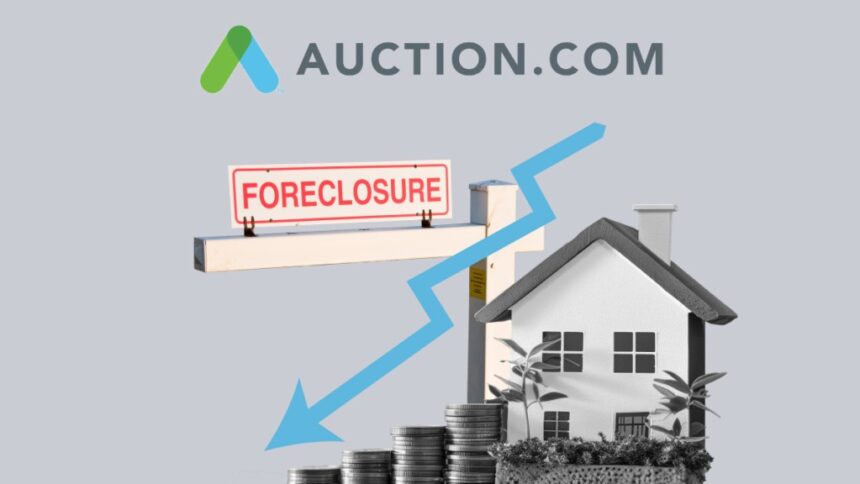
Foreclosure activity has declined significantly since the housing crisis of the late 2000s, and distressed home marketplace Auction.com reported this week that it expects the number of foreclosure-auction sales in 2025 to drop to the second-lowest total on record.
California-based Auction.com published its 2025 Distressed Market Outlook report on Tuesday, which included three scenarios for this year’s expected tally of auction sales.
The company’s baseline forecast is for 69,000 foreclosure-auction sales this year, down 8% from 2024 and the lowest figure for any year aside from 2021, when pandemic-induced foreclosure moratoriums were in place. This forecast also assumes national home-price appreciation of 4% and an average unemployment rate of 3.8% for the year.
For context, annualized home-price growth was 4.3% in the third quarter of 2024, according to the Federal Housing Finance Agency, while the U.S. Bureau of Labor Statistics reported a jobless rate of 4.1% as of December.
Auction.com also calculated two other potential paths for auction sales. One estimate calls for 85,000 sales based on annualized home-price growth of 4% and an average unemployment rate of 3.9%. The other is for 99,000 foreclosure-auction sales if appreciation dips to 2% and the jobless rate averages 4%.

Higher levels of unemployment could cause more homeowners to become delinquent on their mortgages and lead to foreclosure, while slower price appreciation could mean they have less home equity to rely upon to pay debt or avoid a short sale.
Auction.com noted that the 99,000 foreclosure sales, even if they came to fruition, would still represent less than half the 210,000 transactions that took place in 2019 prior to the COVID-19 pandemic.
“Some emerging risks in the economy and housing market are pushing delinquencies higher, but those higher delinquencies will not likely translate into higher foreclosure auction volume until at least early 2026,” Daren Blomquist, the company’s vice president of market economics, said in the report.
The auction data dovetails with a recent Attom report that foreclosure filings (which include default notices, scheduled auctions and bank repossessions) dropped 10% in the past year and are down 35% from pre-pandemic levels in 2019. The 322,000 filings last year means that roughly one in four properties that enter the foreclosure process wind up being sold at auction.
The company’s proprietary data showed that the volume of homes sold at auction to third-party buyers and those repossessed by the foreclosing lender as real estate-owned (REO) declined 3% between the third and fourth quarter of 2024. Volume from October through December was down 11% year over year for the lowest level of auction sales since Q3 2021.
Buyer demand at REO auctions continued to decline in Q4 2024, which Auction.com chalked up to stubbornly high mortgage rates. Its data showed that the average number of bidders at REO auctions were down 7% on a quarterly basis and 9% on a yearly basis.
“Demand from the local community developers buying at distressed property auctions is often sensitive to retail market mortgage rates because those auction buyers are often selling their renovated properties to retail buyers using traditional financing. Higher financing costs for those traditional buyers limits the pool of potential buyers for renovated homes,” the report explained.
The bid-to-value ratio for these distressed properties — the price that auction buyers are willing to pay relative to their estimated after-repair value — also sank in the second half of 2024. Auction.com noted that this ratio tends to be a “reliable indicator of future trends in retail home price appreciation.”
But these ratios vary significantly across local markets. The company noted that auction buyers posted the highest bid-to-value ratios in Q4 2024 in metros like New York City, Phoenix, Las Vegas and Washington, D.C. Conversely, Minneapolis, Detroit, St. Louis and Houston had some of the lowest such ratios.





